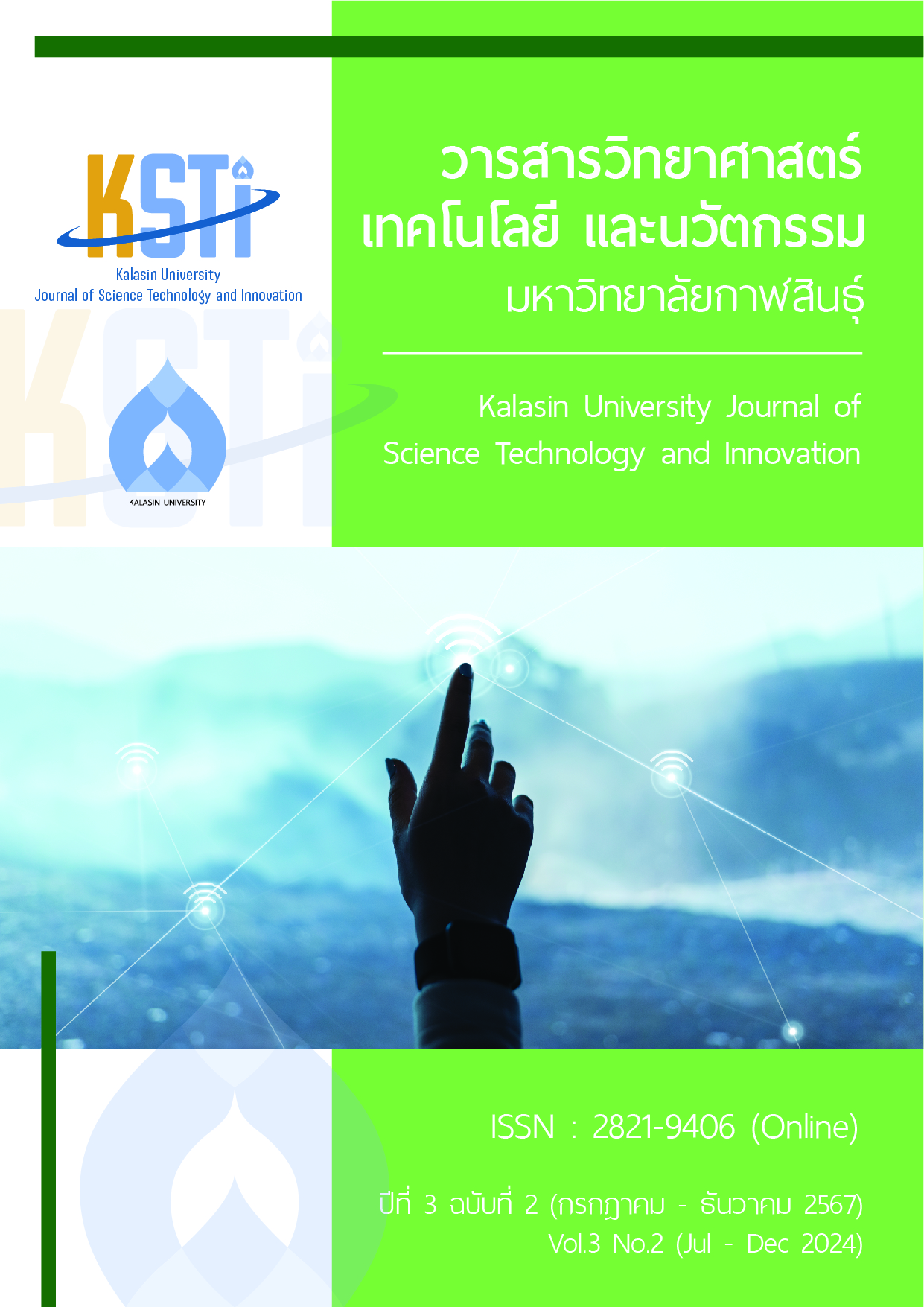Skeuomorphism and Flat Design: UX/UI Design Aligned with Human Perception Processes.
Main Article Content
Abstract
This research aims to: 1) study the principles of Human-Computer Interaction (HCI) and the concepts of two interface design styles-Skeuomorphism and Flat Design, and 2) design a UI/UX prototype application for customer order-taking in restaurants, focusing on user needs and enhancing operational efficiency. Research Tools: This study uses questionnaires to explore user behaviors and requirements, observations of the prototype application usage, and interviews with restaurant order-taking staff to gather data on ease of use, aesthetics, and real-world application responsiveness. Population: The study population consists of 10 order-taking staff from an Isan restaurant. They were observed and interviewed to assess their satisfaction, ease of use, and the suitability of the prototype application. Statistical Analysis: Basic statistics such as mean and standard deviation were used to evaluate the results. Research Findings: Section 1: General Information of Respondents Number of respondents: 10 Gender: Mean = 1.50, Standard Deviation = 0.52705 (50% male) Age: Mean = 1, Standard Deviation = 0.00 (100%, mostly part-time students) Section 2: Satisfaction with Application Use 2.1 Quality of Application Ease of use: Mean = 4.70, Standard Deviation = 0.48 Convenience: Mean = 4.70, Standard Deviation = 0.48 Accuracy: Mean = 4.80, Standard Deviation = 0.42 Speed: Mean = 5.00, Standard Deviation = 0.00 2.2 Application Security Reliability of notification system: Mean = 4.70, Standard Deviation = 0.48 Individual login system: Mean = 5.00, Standard Deviation = 0.00 Accuracy of data processing: Mean = 5.00, Standard Deviation = 0.00 2.3 Application Presentation Text appropriateness: Mean = 5.00, Standard Deviation = 0.00 Component placement: Mean = 4.60, Standard Deviation = 0.51 Use of symbols and media: Mean = 4.30, Standard Deviation = 0.48 Aesthetics: Mean = 4.80, Standard Deviation = 0.42 Modernity: Mean = 4.40, Standard Deviation = 0.51 The use of skeuomorphism in mobile UX design and making interfaces more familiar and user-friendly originated from the early days of computers and mobile devices. Flat Design, on the other hand, emphasizes simplicity by reducing unnecessary details and focusing on bright colors, flat icons, and clean shapes. This design approach aims to enhance usability. When these two styles are combined in design, they can result in a well-designed and fast application. Research indicates that applications designed in the Flat Design style are rated higher in terms of clarity and ease of use compared to the Skeuomorphism style. As a result, Flat Design can be further developed to create efficient applications that better meet user needs in real-world contexts.
Downloads
Article Details

This work is licensed under a Creative Commons Attribution-NonCommercial-NoDerivatives 4.0 International License.
The owner (Research and Development Institute, Kalasin University), the authors agree that any copies of the article or any part thereof distributed or posted by them in print or electronic format as permitted will include the notice of copyright as stipulated in the journal and a full citation to the final published version of the contribution in the journal as published by Research and Development Institute, Kalasin University.
References
Saul Greenberg & Bill Buxton, “Usability Evaluation Considered Harmful (Some of the Time)” in CHI 2008 Proceedings: Usability Evaluation Considered Harmful?, April 5-10, 2008 (Florence, Italy).
Donald A. Norman, The Psychology of Everyday Things (New York: Basic Books Inc., 1988) ISBN: 0-465-06709-3. See also Donald A. Norman, "The Psychology of Everyday Things" (1992) 79:3 Acta Psychologica 275.
Jakob Nielsen, Hypertext and Hypermedia: Historical Context, Findings, and Trends (San Diego, CA: Academic Press, 1990) ISBN: 0-12-518410-7; see also Jakob Nielsen, Hypertext and Hypermedia: Historical Context, Findings, and Trends (San Diego, CA: Academic Press, 1993) ISBN: 0-12-518411-5. See Jakob Nielsen, “Hypertext and Hypermedia: Historical Context, Findings, and Trends” (1995) 11:3-4 Computers in Human Behavior 673.
Kim S, Lee S. Smash the dichotomy of skeuomorphism and flat design: Designing an affordable interface to correspond with the human perceptuomotor process. Int J Hum Comput Stud. 2020 Sep;141:102435.
Shen Z, Chen T, Wang Y, Li M, Chen J, Hu Z. Skeuomorphic or flat? The effects of icon style on visual search and recognition performance. Displays. 2024 Sep;84:102813.
Greenberg S, Buxton B. Usability evaluation considered harmful (some of the time). In: CHI 2008 Proceedings: Usability Evaluation Considered Harmful?; April 5-10, 2008; Florence, Italy.
Dix A, Finlay J, Abowd G, Beale R. Human-computer interaction. 3rd ed. Pearson Education Limited; 2004. ISBN-13: 978-0-13-046109-4.
Nielsen J. 10 usability heuristics for user interface design [Internet]. 1994 [cited 2024 Sep 4]. Available from: https://www.nngroup.com/articles/ten-usability-heuristics/
Gibson J. What is skeuomorphism? [Internet]. Interaction Design Foundation - IxDF; 2016 Jun 4 [cited 2024 Sep 4]. Available from: https://www.interaction-design.org/literature/topics/skeuomorphism
Nielsen Norman Group. Articles & videos [Internet]. [cited 2024 Sep 4]. Available from: https://www.nngroup.com/articles/flat-design/
Karray S, Driss Z. Fluid-structure interaction of a radial turbine. In: Applied Computational Fluid Dynamics. Available from: https://books.google.co.th/books?hl=th&lr=&id=oOuZDwAAQBAJ&oi=fnd&pg=PA201&dq=karray+et+al.+2008+flat+design&ots=Ic8volxC6t&sig=kcKjDd7_vyzysylv8VTPHGdrFGo&redir_esc=y#v=onepage&q&f=false
Kim S, Lee S. Smash the dichotomy of skeuomorphism and flat design: Designing an affordable interface to correspond with the human perceptuomotor process. Int J Hum Comput Stud. 2020;141:102435.
Rogers Y, Sharp H, Preece J. Interaction design: Beyond human-computer interaction. 3rd ed. 2011.


